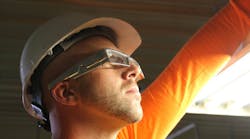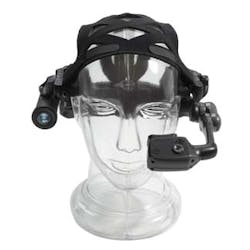Unless something seriously weird happens in the market, wearable gadgets – be they smartglasses or smartwatches or any other tiny, connected accessories – are going to be huge.
Already, fitness devices like the Jawbone or Nike's Fuel Band have hit the gyms, beefing up workouts with big data and analytics.
In the office, techies are already multitasking through meetings with Google Glass, and busy executives are picking up real time updates through their Galaxy Gear smartwatches.
Wearables are officially here, officially in our lives and about to get even more pervasive.
In all, Juniper research expects the wearables market to grow to a $1.5 billion industry this year and shipments of these devices should exceed 130 million in the next four years. And that's probably conservative if it all catches on.
There's good reason for this sudden boom – these devices are designed to merge relevant, real-time data and information seamlessly into our lives, bringing us what we need when we need it without having to fumble in our pockets to find it.
It's a technology perfect for the gym, perfect for the boardroom, perfect for our already crowded digital lives – so perfect, in fact, that many manufacturers are considering the next logical step: the industrialization of wearable technologies.
From a certain angle, the factory seems like the ideal application of wearables. After all, a worker standing at a machine is far more in need of real time data than anyone at the gym or office. Furthermore, keeping his or her eyes on that machine and off the phone for that information is absolutely critical.
Real time data and real time insight fed to an operator who needs it could realistically (and significantly) impact the efficiency of the enter factory.
So it seems like a perfect application… almost.
A Case against Distraction
"Products like Google Glass seem like a good fit for industry, but at the end of the day, there are some very basic problems with those technologies," explained C. Aaron Salow, CEO of XOEye Technologies – an Ann Arbor-based start-up specializing in industrial wearables.
For one thing, he noted, there is that little matter of distraction.
"Do you really want employees walking around with something in their line of sight?" he asked. "That's not something people are comfortable with from a safety perspective. "
And then, of course, there is the matter of controls. Devices like Glass all require capacitive touch, which is fine if your job doesn't require gloves. If it does, the last thing you want in a dangerous environment is workers taking off their protective gear to operate a new piece of hardware, Salow explained.
"And you may say, 'just use voice control,'" he added. "That would work, unless you're standing next to a 50-ton press, in which case there are not many computers that can understand a human voice."
So there is the case against wearables in the industrial space – at least wearables as we have known them so far in the consumer market. And it's also where XOEye really enters the picture.
According to Salow, the first step to industrial wearable computing requires something a little simpler and a little more practical that the consumer products – a device that adds the functionality workers need without distracting them from the jobs the need to do.
Enter the XOne.
A First Step toward Industrial Wearables
Salow's contribution to this field is the XOne – a stripped-down, industrialized pair of smartglasses designed around real-world factory demands.
It is the first offering in what should shortly be a rich, competitive field of everyday industrial wearables – an offering with an already interesting arrangement of features.
"At a device level, it was important to us not to add something to an employee's uniform," Salow explained. "We wanted to replace something worker already wear rather than add a clip-on or some other type of awkward contraption."
Sallow went with safety glasses – not some slick, high tech looking smart thing, but lightweight, robust, certified eye protection meant to be worn every day to protect from everyday factory hazards, optimized with slick high tech features.
Those features include:
- Barcode scanning with simple, non-distracting, binary heads up display
- Video and audio telepresence with cloud-based servers
- Biometrics tracking, which can help discover and resolve workflow issues.
These features, in the safety glass packaging, are what make this product stand out.
There are already some extremely robust, extremely intricate and powerful industrial wearables on the market – products like Motorola Solutions' HC1, which provides telepresence, heads-up computing and two-way video telepresence in the field.
But devices like the HC1 are add-ons and, however useful, exactly the kind of "awkward contraption" you might not want your machine operators continuously distracted by. Rather, they are powerful tools for specific jobs and specific functions.
If wearables are going to work in the factory, they need to merge into everyday life – they need to be non-disruptive, performance enhancing accessories that don't complicate life or distract from workers' jobs. Which makes the XOne such an interesting start.
"This is the first real step into industrial wearable computing," Salow said. "We believe these things are something that people really need to use. And we think this is how they will begin using them."





